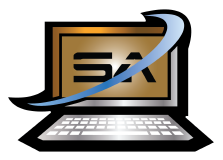IT Tooling - Part 2

Part 1 of this series explored two categories of tools of the IT trade that I deem critical to my success as an IT professional. The Operating System, which forces the choices of many of the other tools, is explored there, along with my favorite Password Management tool - a critical component of keeping my sanity among the variety of machines I am tasked with maintaining every day.
Below are several more categories of tools that I work with on a regular basis, which ones I like and why.
Favorite Business Applications
Hands down, Office 365. I don’t want to ever administer O365 for a company, as I hear it is a nightmare, but as an end user, there is nothing even close in my opinion. My only “complaint” is 1) no option includes Visio, and 2) the applications have not been written to work natively in Linux yet. However, with WINE, Crossover, or other similar tools, you can make Office work on Linux, if that is your base OS, or you can always use a desktop virtualization solution such as VirtualBox. As for Visio, one credible alternative that I really like in its absence is Draw.io.
Favorite: Office 365 with Draw.IO for diagramming.
Favorite Browser
Browsers are becoming a choice of the past for many. I mean there is Chrome, a bunch of Chrome wanabees (including my previously loved Firefox), and Edge. Many, of course, would argue the point, but it is impossible to argue that the interface of ALL browsers have become increasingly minimalist in the same design pioneered by Chrome. Moreover, the automatic updates that users are unable to opt out of is an increasingly common experience forcing those who are interested in maintaining control to use the enterprise versions of the software, if available. However, out of this morass of me-too software, I found one that is trying to stand out and allows me to work with my own workflows and interfaces more than most. This newcomer has quickly become my favorite browser and has the added benefit of using Chrome plugins, so I don’t lose functionality while waiting for their own ecosystem to grow. That browser is Vivaldi.
Built over 4 years ago now, by the original designer of Opera and the team of volunteer contributors he built up over the years, Vivaldi’s main value add for me over Chrome is it allows me to setup the browser the way I want it for my own workflows. As already mentioned, it supports all Chrome addons - so my favorite password manager, for example, will still integrate with it. They also have listened to many of their users and added several new and useful features such as the sidebar that I use on a daily basis. Other features such as the notepad can be instrumental in the workflows others use. Support for grouped tabs, and a variety of other features help to work together to make this a standout browser.
Favorite: Vivaldi
Favorite Text Editor
Now we are getting into scary parts. For me, a text editor is really just a lightweight, multi-language IDE. Given the work I do, I care most about Bash, Powershell, and progressively Python scripting capabilities, with the ability to view and edit far more languages/formats including Python, Javascript, HTML, and many others. Ideally it should support snippets to shortcut my script creating and it should do text highlighting at a minimum. Auto-indent with user controlled spacing is a big plus, as is the capability to run linting utilities to formalize the scripts and avoid stupid coder errors. Currently my favorite Text Editor has increasingly become VSCode, mostly due to it’s full integration with Git and simple plugin search and add capabilities; as well as the large pool of additional tools the community has made to meet the needs I listed (and more) for nearly any language you can think of. My previous favorite, and still a standard install on most of my machines for quick edits is my fallback option of Notepad++. While Notepad++ does have most of the same options for many languages/formats, and all that I care about, it is less intuitive as an IDE and much more difficult to configure for smooth development. Still, it is quite a bit smaller, and far faster for quick edits or searching through logs, for example. As you can probably tell, I generally use both tools, just for different reasons.
Favorite: VSCode, with an honorable mention of Notepad++
Favorite File Transfer Utility
File transfer utilities, also known as FTP Clients, are a basic useful tool for moving files from place to place. Built in tools in almost every OS means this tool is squarely in the “nice to have” category, but any admin worth his salt knows that “nice”, in this case, borders on “needs”. There are tons of good options ranging from free to expensive, open source or closed. I have always been a fan of FileZilla due to it’s free, open source nature, and the simplicity and functionality of it. However, in more recent years, I have migrated more toward WinSCP, mostly due to the greater variety of formats supported and password management integration.
Favorite: WinSCP, with an honorable mention of FileZilla
Favorite Archiving Utility
Archiving utilities, also known as zip utilities, are much like FTP clients in that they are a basic tool built in to almost every OS at some degree. However, unlike FTP, there are a variety of features that the built in versions just do not have making it a necessary tool for all but the most basic users. Features such as password protected archives, split archives, executable archives, and similar features are all key components of a full featured zip utility that built in tools rarely provide. And, of course, there is the never-ending variety of formats that a file can be archived in - support for both encoding and decoding a variety of formats becomes essential when sharing compressed files. WinZip and WinRAR used to be king here, and both are still strong players, but 7Zip has beat them both due to the open source and free nature of the tool, as well as the high-end functionality it provides. Personally, I have always hated the interface, and it’s only saving grace in my eyes was that it provided a command line interface allowing me to script 7-Zip archives. I have since learned of PeaZip, another utility that is free, cross-platform, and open source with support for most of the same formats, a CLI interface, and a unified portable GUI that just looks much better, and cleaner, than 7-Zip. Don’t get me wrong, looks are the last thing I am concerned with when it comes to my software, in general, but if the two are equally capable, I will always choose the prettier one.
Favorite: PeaZip
There are many other categories of tools that are either special purpose tools, tools that I use only rarely, or, in some rare cases, I just don’t have a favorite tool. I left those categories out because I want to see what you, dear reader come up with as critical to your ability to function as an IT professional (or professional in whatever your area of expertise is). What are your favorite tools, and in what categories? Leave comments below to tell me of new tools to check out or old favorites. Keep it to the Desktop though - we will discuss server software in another series.
